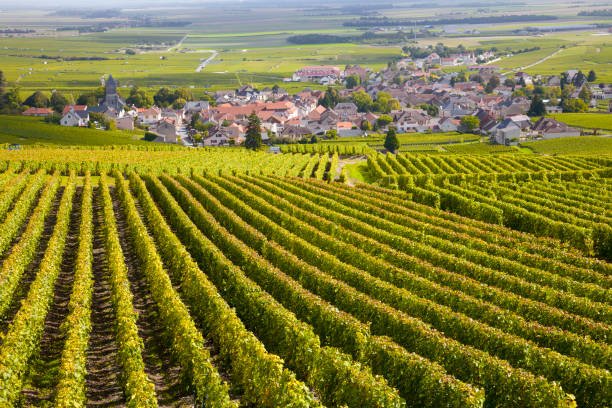Here are the best New Year’s Resolutions for Wine for Dry January Followers
This is a repeat of my post from the end of December. As promised, I’m sending it out again for those who did Dry January. Hope it went well. February Resolutions were posted on January 31st. Check them out. No pressure.
Resolutions?!? Wasn’t Dry January enough?
Wait, what? More pressure to improve and do better?!? NO.
Let’s give ourselves a break. Let’s have a fun resolution.
Let’s talk about this.
A few years ago, I decided that all of these exercise more, do more, be more, and weigh less New Year’s resolutions were horrific. They were mind numbing and depressing. Everyone was suggesting too much deprivation and self-improvement at some, quite honestly, arbitrary time of the year. It put on so much unnecessary pressure and stress.
That was the year I decided to have a silly and fun resolution. My resolution to have more lemongrass (yep, it’s true) could have been handled better. I thought it sounded ridiculous enough, but I had no idea how to cook it. In retrospect, I also am not sure how much more joy it would have added to my life regardless.
Wine Resolutions hold promise for good times and more joy!
To achieve this goal, I will suggest a resolution for each month as we reach the end of the prior month. No more: OH NO, I SCREWED UP MY RESOLUTION AND ITS ONLY THE 3RD DAY OF THE YEAR.
For those who did DRY JANUARY, I am posting this again at the beginning of February along with the new one for February. Jump in any time with these resolutions. Let’s not be arbitrary. (I will still be doing my weekly posts as well.)
January’s Resolution:
Let’s try to learn more about and compare Old World and New World wines. Since that is way too big an undertaking to be enjoyable, let’s start with Chardonnay. Let’s use France and the United States as examples. Let’s ease into the resolutions. Otherwise it may stop being an addition to your life.
First, let’s take a step back. Let’s see what we should know that will be helpful.
With wine, what is meant by OLD WORLD and NEW WORLD?
Many people refer just to Europe for Old World. More broadly it includes North Africa and the Middle East, but that is too much to unpack for our purposes. NEW WORLD is basically everywhere else. More specifically that is the United States, South America, Australia, New Zealand, and South Africa (South Africa actually has some wineries as old as those in Europe, but I didn’t make these rules). Some times Canada is included.
Now let’s talk Chardonnay. Chardonnay as a grape variety can be grown in lot of different climates. While the climate can determine how the wine turns out, the wine making itself is a also factor. We are talking a wide range of styles and price points.
Our resolution is for good times and more joy with wine, so let’s see what else we should know so we can be a well informed shopper and wine drinker.
The most well known region for Old World Chardonnay is in Burgundy, France. This is probably a good time to talk about wine labels and rules in the Old World. They take this very seriously. They have been doing this for centuries.
They have rules and regulations out the wazoo.
At the very least you should know this:
Old World Wines usually have some sort of a Geographical Indicator (GI) listed on the label. Requirements can include where (geography), what (varietals used) and how (winemaking technique.) It goes from generic area to really specific, as in a specific vineyard within an already narrowly drawn area.
Generally, the more specific the label the higher the price. That is basic supply and demand. Whether the price is worth it and is more delicious for you - that is another matter. However, some wine makers will deliberately choose a less restrictive category so they can have more flexibility.
The wine label will likely not specify Chardonnay specifically, but the area it is from. If the area is brag worthy they want the area front and center. Lower priced wines are more likely to mention the grape type. If the wine is white and from Burgundy, it will almost always be Chardonnay (sorry Aligoté, I don’t want to focus on your less than starring role at the moment.)
Vineyards on a hill have better drainage and often have higher prices.
Even which side of the hill and when it gets the sun is important.
As with any real estate it’s LOCATION, LOCATION, LOCATION!
In Burgundy, real estate is king!
Should you want a deep dive into this, have at it. However, whole wine text books have been written on this. Remember, this New Year’s resolution should be fun.
Wines in the United States (New World), on the other hand, have a much less structured labelling system. It will, however, usually have the grape type on the label.
In the United States they do have something called an American Viticulture Area (AVA) which is geographic only ( that’s the where.)The first AVA was in 1980 so we aren’t talking a long established history. It was in Augusta, Missouri. I’m not kidding. No offense to the labeling in the US, but I am not sure how much AVAs will help you when looking for a chardonnay.
Well, now what? Now what should I do to see my resolution through?
Now, you drink and compare.
(I told you this should be fun.)
How do I start?
What I suggest is that you go to a wine store or anyplace that sells wine. Look around. If someone asks if you need help, tell them, “not yet.” See what you can discover on your own. Approach it like looking in a bookstore or library trying to find something fun or interesting to read. Have fun with it.
Some stores organize by type of grape, some by country, and some by price. There is even a store that has an ABC section. It stands for Anything But Chardonnay. Don’t be that person. Chardonnay has so many styles to choose from, you will be able to find a style you like.
If it is overwhelming, decide on a price range. While price is not an indicator of whether you will like it or not, choose wines similarly priced to have a fair comparison.
Cheat sheet in case you see any of these terms:
If New Oak is used it will impart stronger flavors than Old Oak.
American Oak will often impart stronger flavors than French Oak. American Oak can be used in France and vice versa.
Oak plays a number of different roles in the wine making process.
Malolactic fermentation usually results in a creamier less acidic wine.
In Burgundy, Grand Cru is a higher level than Premier Cru.
Vielle Vignes means old vines, but there is no legal definition for this.
Now for some suggested wines or areas in France:
For wines in the lowest price range look to Macon (southern Burgundy) or to Pays d’Oc (an area in southern France). You can also look at wines titled Bourgogne Blanc ( this is the entire Burgundy area.) Macon-Villages is a step above Macon (more specific versus generic.) Personally, at this price point, I prefer the wines from Pays d’Oc. But it’s your resolution. Try anything you want.
For the next levels up, I really like a Pouilly Fuissé (specifically a Louis Jadot) if I’m upping my price range. Some feel that a Pouilly Fuissé is over priced because it is so well known, but it is reliably tasty. This wine is from a region within Macon (remember from above that a more narrow region usually has a more expensive and sometimes more delicious wine.) Do not confuse this with Pouilly Fumé which is a sauvignon blanc from the LoireValley.
Also consider Chablis. While the Premier Cru and Grand Cru Vineyards in Chablis are quite pricey, the commune or village Chablis are more reasonably priced. Chablis wines appeal to those who may want a more acidic less fruity wine, but they do vary stylistically.
Now we get to the more expensive all the way up to the stratospherically more expensive.
Unless you have money to burn, I would stay out of this price range. These would include top of the line Chablis and anything with the word Montrachet in it ( once you’re looking in a wine store you will see what I am referring to.) I have tasted many of them at various wine tastings, and some (but not all) are quite good, but you run the risk of making a very expensive mistake. I would never recommend this, especially since my blog does focus on not making expensive mistakes.
Here are some suggestions for the United States:
This is harder because unlike France, any area is allowed to have a Chardonnay wine. No offense to other wine areas, but I think your best bet is to go west coast, as in California, Oregon, and Washington. There are those who love Long Island wines, but I find them too hit or miss to reliably recommend it.
For your least expensive my favorites are Kendall Jackson Vintner’s Reserve (not the Grand Reserve which is more expensive) and Clos du Bois. Do not go too inexpensive. They can be awful, objectively speaking. Seriously.
These are my go to Chardonnays.
Kendall Jackson Chardonnay is one of the most popular in the country. Sometimes popular means that people are just lemmings and will follow the crowd. Kendall Jackson is popular for a reason. They are reliably good.
I strongly recommend Sonoma chardonnays, particularly from Russian River Valley for your next step up price wise. There are a number of excellent choices and different price points. Au Bon Climat in the Santa Barbara area also has delicious Chardonnays at different prices. Another choice could be Napa Valley which does have some lovely ones. I do feel you will pay a premium of sorts for the Napa name, but you could do your own recreation of the The Judgment of Paris in 1976. This put California wine on the map, so to speak. Spoiler alert: France didn’t win. Look it up or find the movie if you want to find out more.
I see no reason to go to the stratosphere with price at all. I will make no recommendations except to say DON’T.
Should you want help at the wine store, now you could ask. Do not be intimidated. Ask what you are gaining or losing by going to a different price point. If they can’t answer that question, don’t rely on their advice.
Since this is your Resolution, compare any wines you want. It certainly doesn’t have to be France versus the United States. Try it with different foods. Try them at a party. Comparing any wines is helpful to learn what you like and what you could skip.
What do you want to drink more of in the future?
RESOLVE TO HAVE FUN!




